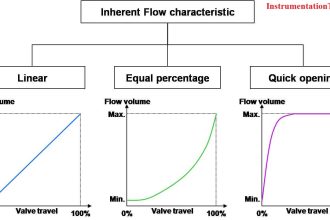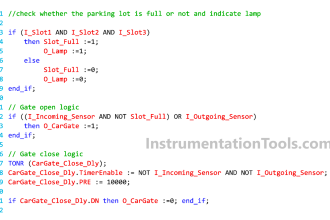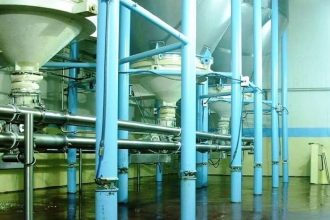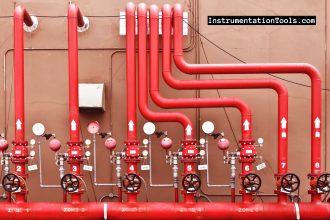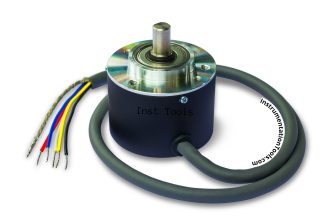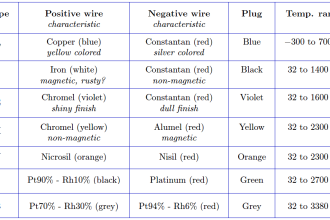Secondary Reference Electrodes Questions & Answers
1. Which of the following cannot be used as secondary reference electrode?
a) Calomel electrode
b) Silver-silver chloride electrode
c) Mercury-mercury sulphate electrode
d) Glass electrode
Answer: d
Explanation: Glass electrode cannot be used as secondary reference electrode. It is an indicator electrode. It responds to the changes in the activity of the analyte ion.
2. Which of the following is known as calomel?
a) Silver chloride
b) Mercury chloride
c) Potassium chloride
d) Mercury sulphate
Answer: b
Explanation: Mercury chloride is known as calomel. The most important general purpose secondary electrode is calomel electrode.
3. The calomel electrodes are classified based on which of the following?
a) Materials used in the electrode
b) Amount of mercury present
c) Concentration of Kcl
d) Purity of mercury
Answer: c
Explanation: Several convenient calomel electrodes are available. They are classified based on the concentration of Kcl.
4. Which of the following calomel electrodes are used for accurate work?
a) Saturated calomel electrode
b) Electrode with 0.1M Kcl
c) Electrode with 1M Kcl
d) Electrode with 2M Kcl
Answer: b
Explanation: Calomel electrode with 0.1M Kcl is used for accurate work. Saturated calomel electrodes are easy to prepare and maintain.
5. Calomel electrode can behave as which of the following components?
a) Anode only
b) Cathode only
c) Anode or cathode
d) Salt bridge
Answer: c
Explanation: Calomel electrode can behave as anode or cathode depending upon the half cell. A salt bridge is used for coupling.
6. When the calomel electrode acts as the cathode which of the following does not occur?
a) Mercury ions are discharged at the electrode
b) More calomel passes into the solution
c) There is a decrease in the concentration of chloride ions
d) There is an increase in the concentration of chloride ions
Answer: d
Explanation: When the calomel electrode acts as the cathode. When the calomel electrode acts as the cathode, mercury ions are discharged at the electrode. More calomel passes into the solution. Hence, there is an increase in the concentration of chloride ions.
7. Which of the following is not the characteristics of calomel electrode?
a) The potential of electrode is not temperature dependent
b) Preparation of electrode is easy
c) Value of potential or emf is higher for lower concentration of Kcl
d) Value of potential decreases with increasing concentration of Kcl
Answer: a
Explanation: The potential of calomel electrode is temperature dependent. When temperature changes potential comes to a new value. It cannot be used in places where high temperatures exist.
8. Which of the following is not the characteristics of silver/silver chloride electrode?
a) These electrodes have good electrical and chemical stability
b) It can be used in temperatures greater than 600oC
c) It can be used in places or solutions that have strong reducing agents
d) It should not be used in solutions that contain proteins, sulphide or bromide
Answer: c
Explanation: The silver/silver chloride electrode cannot be used in places or solutions that have strong reducing agents. They will reduce the silver ions to silver metal.
9. While using reference electrodes, the internal liquid level should always be kept above that of the sample solution.
a) True
b) False
Answer: a
Explanation: While using reference electrodes, the internal liquid level should always be kept above that of the sample solution. This is done to prevent contamination of the electrolyte solution.
10. Which of the following salt bridge solutions must be used for silver/silver chloride electrode?
a) Saturated KCl
b) Saturated K2SO4
c) Saturated LiCl
d) Saturated KNO3
Answer: a
Explanation: Saturated KCl is used as the salt bridge solution for silver/silver chloride electrode. It can also be used for calomel electrode.
11. LiCl salt bridge is more suitable in organic solvents than KCl.
a) True
b) False
Answer: a
Explanation: LiCl salt bridge is more suitable in organic solvents than KCl. It is used for the measurement of non-aqueous solutions.







